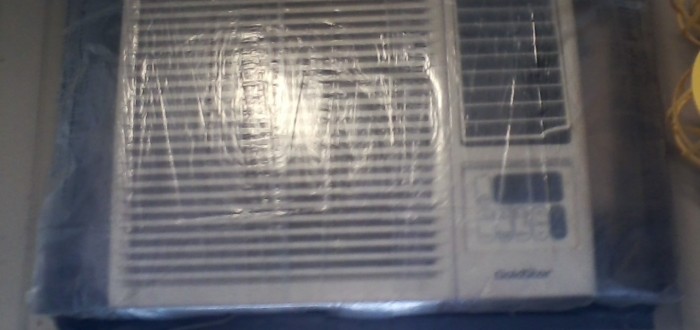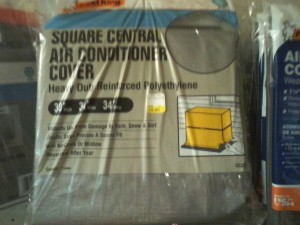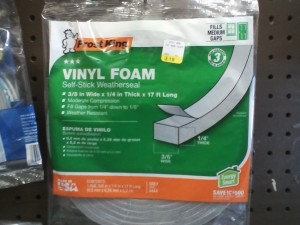Today’s topic came to me as I was trying to keep some of the bad (read cold) air out of the store. We have a window style air conditioner mounted in a cutout over our front door. It does a so-so job of cooling in the Summer, but in the Winter it does a great job and the frigid air just pours out of it. I try to remember to cover it every Winter (should have done it before now). So today we’ll talk about keeping the bad (cold) air out of your home.
To cover the subject matter first. If you can, take your window air conditions out of the window when you don’t need them for cooling any longer. If yours is to much of a pain like ours, cover it up. I used a piece of clear plastic drop cloth to cover the front of the unit and I secured it with regular duct tape, the handyman’s (or woman”s) friend. Cover the outside too if you can. They make special covers that are more heavy duty than my sheet plastic. They are especially good for the outside.
To back up a little, basic weatherproofing consists of sealing up all the little cracks around your home to keep the cold out. The basic material for this is caulking. Just run a bead along all the cracks, both inside and out. This is pretty easy stuff to apply. Just put a tube in your caulking gun and run it along as you squeeze the trigger. If you get too much on, either the wall or yourself, just wipe the excess off with a rag.
If you have cracks that are too large to fill with caulk, you have what the industry had named a gap. What to do? Gap filler of course! Gap filler or expanding insulation foam, comes in several flavors, differing basically in how much it expands once it escapes its pressurized can. This stuff is fun to use, just watching it expand is a hoot. But be forewarned, it can be very messy and once it gets on any surface, including skin, it’s almost impossible to get off. Cheap plastic gloves are highly recommended. Also once you start to use a can, try to use it all. Any leftovers will just harden in the can and be wasted. I try to scout ahead and find several extra places that could use filling if I have more foam.
The previous methods are great for stationary fissures, but what if you need to open and close your crack periodically? Of course I’m talking about doors. There are a couple of ways to cut down on the air getting in around your door. They make weatherstripping to go around the door frame and seal any space. It is a foam tape that sticks to the frame and compresses when you close the door. Try to pick a size that will do a good job of sealing, but still allow someone without superpowers to get the door to latch.
The gap at the bottom of the door is challenge of its own. Flexible rubber draft strips are made to attach to the backside of the door to seal it against the floor. The trick is to mount it low enough to seal the cold out, but still allow you to open the door over sills, carpeting or floor mats that all stick up differing amounts from the floor. If you have trouble finding something that will work portable draft strips that just slide under the door are also available. You’ll just have to see what will work.
Well that’s about it from the Old Hardware Store this week. Try to stay warm. By the way, the title of this article comes from the dialog of an old Peter Sellers Pink Panther movie that I love to watch. Just the thing to put on the movie player to hunker down with until this weather lets up a little.







